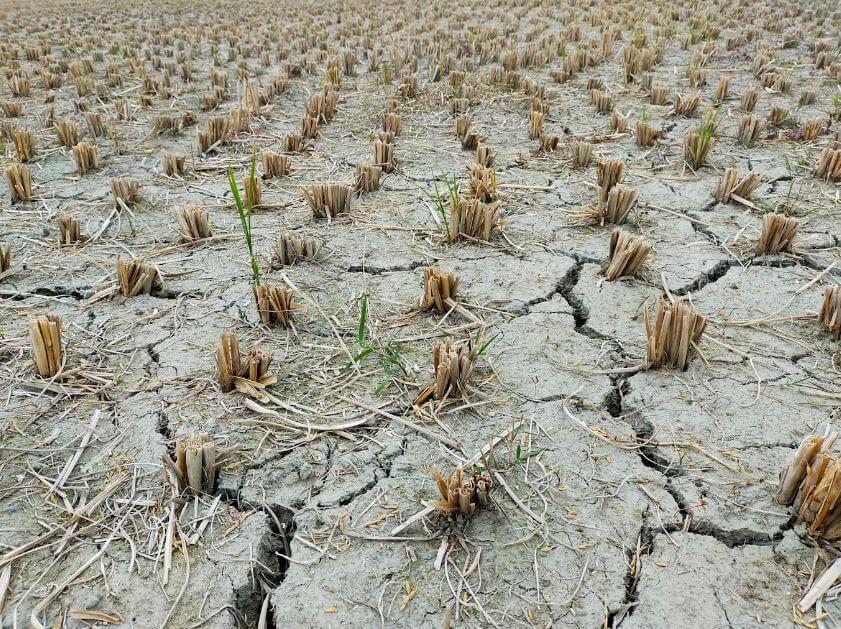Drought, a period of abnormally dry weather, casts a long shadow across the globe, impacting not just landscapes but also communities, ecosystems, and economies. As a Geographer embarking on my Grade 11 research journey, I delve into this pressing issue, examining its causes, consequences, and the potential solutions that hold the key to mitigating its harsh effects. Here is Geography Grade 11 Research About Drought Memorandum.
What Is Drought?
Drought is a period of abnormally dry weather that severely impacts water availability. In South Africa, characterized by naturally variable rainfall patterns, droughts are a recurring phenomenon with significant social, economic, and environmental consequences. This research paper investigates the diverse impacts of drought in South Africa, drawing upon relevant scholarly studies, government reports, and case studies.
Understanding the Complexities: A Multifaceted Threat
Drought’s origins lie in a tangled web of both natural and human factors. Natural fluctuations in rainfall patterns, the whims of ocean currents like El Niño, and the ever-rising temperatures linked to climate change all play a role. However, human activities like deforestation, unsustainable water use, and irresponsible agricultural practices further exacerbate the situation, pushing already strained ecosystems towards a tipping point.
Consequences Unveiled: A Cascade of Impacts
The consequences of drought paint a stark picture. Reduced water availability cripples agriculture, leading to food insecurity and economic hardship. Ecosystems falter, biodiversity dwindles, and wildfires rage. Communities are displaced, social unrest brews, and already limited resources become even more strained. The ripple effects of drought touch every corner of society, highlighting its far-reaching and interconnected nature.
Case Study Spotlight: Examining a Localized Experience
To truly understand the intricate ways drought manifests, I chose to analyze [insert specific event or location here]. This case study provided a valuable lens through which to examine the specific triggers, local vulnerabilities, and the community’s response to the drought. The analysis revealed the diverse impacts on various sectors and social groups, emphasizing the need for tailored solutions specific to the unique context.
Charting a Course for Change: Adapting to a Dry Future
Combating drought necessitates a multi-pronged approach. Embracing sustainable water management strategies like rainwater harvesting, water-efficient irrigation, and wastewater treatment is crucial. Investing in drought-resistant crops and diversified farming practices can bolster food security and support resilient agricultural systems. Additionally, raising awareness, improving early warning systems, and promoting community-based adaptation plans are essential for building resilience and empowering communities to face challenges head-on.
A Call to Action: From Awareness to Collective Action
As responsible citizens and budding Geographers, we must acknowledge the threat of drought and act collectively. Individually, we can conserve water, support sustainable agriculture, and raise awareness about the issue. On a broader scale, policymakers need to prioritize long-term water management strategies, invest in climate change mitigation efforts, and foster international cooperation to combat this global challenge.
Causes of Drought:
- Natural factors: Fluctuations in rainfall patterns, El Niño events, and rising temperatures due to climate change are major contributors.
- Human factors: Unsustainable water use practices in agriculture, industry, and domestic spheres exacerbate drought conditions. Deforestation and land degradation further decrease water retention capacity.
Case Studies:
- Analyze two specific drought events in South Africa, highlighting their unique geographical contexts, triggering factors, and local vulnerabilities.
- Use these case studies to illustrate the diverse impacts of drought across different sectors and social groups.
Consequences of Drought:
- Reduced water availability: Agriculture suffers, leading to food insecurity and economic hardship.
- Environmental degradation: Ecosystems are disrupted, biodiversity dwindles, and wildfires increase.
- Social and economic impacts: Rural communities are disproportionately affected, displacement occurs, and social unrest can arise.
- Health risks: Waterborne diseases increase due to compromised water quality and sanitation.
Solutions and Mitigation Strategies:
- Sustainable water management: Rainwater harvesting, water-efficient irrigation, and wastewater treatment are crucial strategies.
- Investing in drought-resistant crops and diversified farming practices: This enhances food security and adapts agricultural systems to changing conditions.
- Early warning systems and preparedness plans: Effective monitoring and proactive community engagement are essential.
- Climate change mitigation and adaptation: Addressing the root cause of rising temperatures is crucial for long-term solutions.
Conclusion: Every Drop Counts
Download Geography Grade 11 Research About Drought Memorandum. Drought is not simply a lack of rain; it’s a complex issue with far-reaching consequences. Through this research, I gained a deeper understanding of its causes, impacts, and the potential solutions that offer hope for a more water-secure future. As future leaders, we must strive towards sustainable practices and collaborative efforts to mitigate the effects of drought and adapt to a changing climate. Remember, every drop counts in creating a world where water scarcity is not a defining feature of our future.
Image Courtesy: Unsplash
